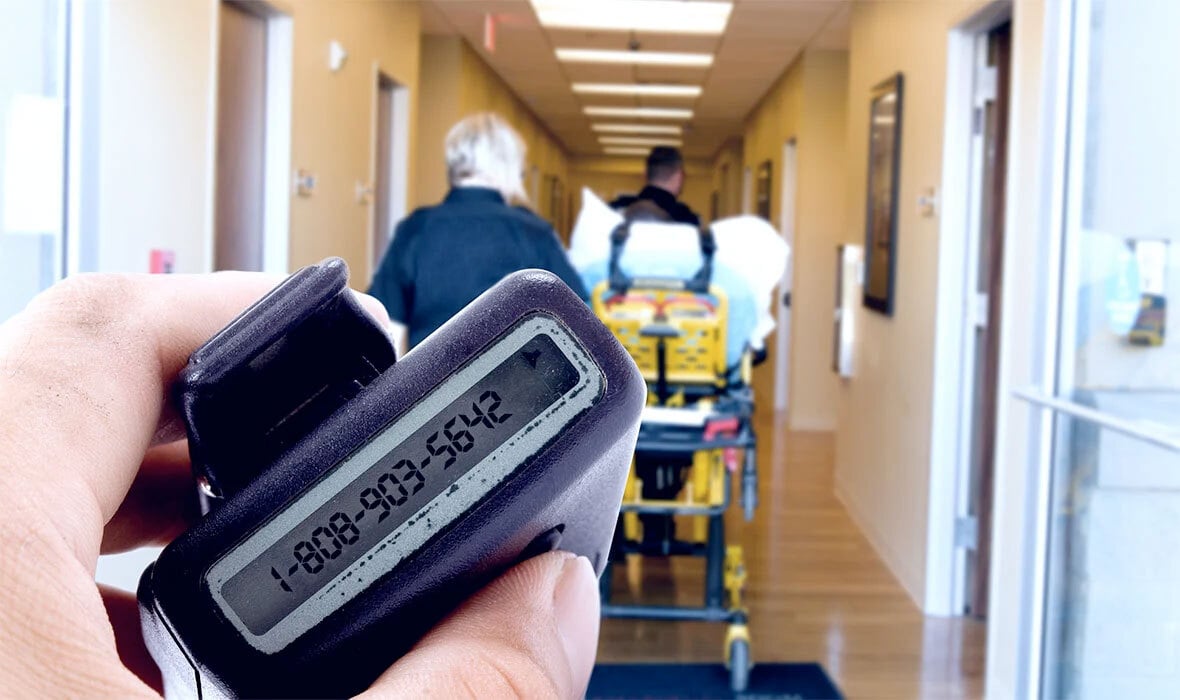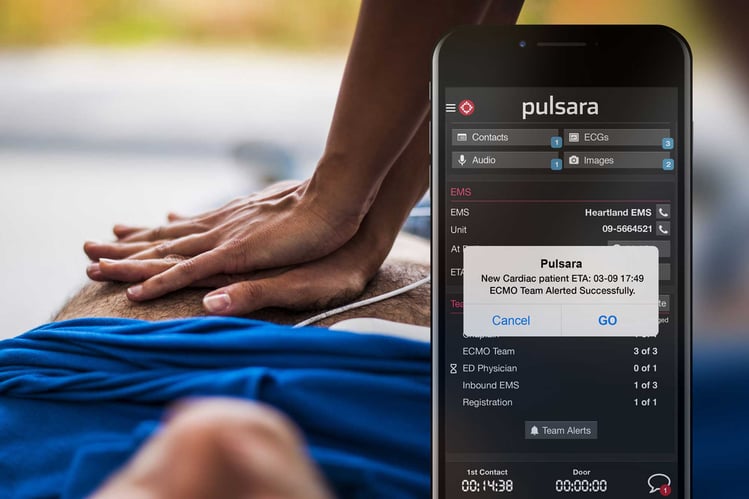Pulsara Around the World - 2025 Recap and January 2026
December Recap After an incredibly busy events year with 102 conferences, trade shows, and sponsorships, December was on the slower side for us, with...
3 min read
 Team Pulsara
:
Mar 10, 2021
Team Pulsara
:
Mar 10, 2021

EDITOR'S NOTE: Special thanks to Kinsie Clarkson (Pulsara's Product Marketing Specialist, 2020-2025) for writing today's blog post. You can connect with her on LinkedIn.
__
Pagers have been a staple in healthcare communication since the 1980s. Small, loud, and easily passed from clinician to clinician, pagers have been the constant companions of doctors and nurses for a long time. And in that time, they've been vital tools for communication.
They have their drawbacks, but there are a few important reasons why pagers have stuck around for so long. One particular feature in the pager's design has ensured their longstanding usefulness for physicians: The loud, obnoxious alerts.
Why is that important? Pagers interrupt workflow. In a good way.
Doctors, nurses, surgeons, and specialists have many important things vying for attention at any given time. But when a time-sensitive emergency occurs, every second counts. Clinicians don't have time to waste; they need an instant notification that will grab their attention and give them as much time as possible to prepare for the incoming patient.
 That's where pagers have spent decades filling a need that few other technologies could. Pagers are designed to send immediate, loud alerts that are easy to differentiate from all other notifications and are impossible to ignore. These little devices effectively interrupt a clinician's workflow, drawing their attention to the emergent notification and helping them instantly prioritize where their attention needs to be. The distinctive alert cuts through everything else that is going on. Without even thinking about it, clinicians know to drop whatever they're doing and find out when and where they're needed.
That's where pagers have spent decades filling a need that few other technologies could. Pagers are designed to send immediate, loud alerts that are easy to differentiate from all other notifications and are impossible to ignore. These little devices effectively interrupt a clinician's workflow, drawing their attention to the emergent notification and helping them instantly prioritize where their attention needs to be. The distinctive alert cuts through everything else that is going on. Without even thinking about it, clinicians know to drop whatever they're doing and find out when and where they're needed.
Interrupting workflow with this type of instant prioritization is vital to effective emergency response. There is a drawback, though: pagers are only designed for one-way communication. They are great for sending alerts, but once sent, there's no way to track the message; you don't know whether the recipient has seen or acknowledged it. Pager alerts also don't include all the information the clinician needs in order to head straight to where they need to be. Most of the time, the recipient has to find a phone to call the number, hopefully, reach the person, and then ask for the answers to those questions. All those extra steps take extra time, delaying the patient's care.
In order to best prepare for the future, it's important to build from what's already working well. At Pulsara, we've designed our platform to take the best features of pagers and fill in the communication gaps they leave behind. Like pagers, Pulsara uses a loud, distinctive alert to interrupt workflow and direct attention to the emergent notification. Where pages occasionally get missed, Pulsara alerts automatically repeat until acknowledged. The platform automatically captures team acknowledgment, so everyone knows the responding care team and can see exactly what each of the other team members has seen.

Pulsara lets clinicians create a dedicated channel for each patient, giving every member of the care team access to tons of patient-specific information and creating a shared consciousness around the patient. Dr. Matt Angelidis, an emergency physician and co-medical director of the Colorado Springs Fire Department, described what it's like to receive a Pulsara alert:
“All of this healthcare data is within the Pulsara app. As I am pinged by [EMS], I get a little Pulsara blurb that pops up. It makes a rather annoying noise that lets me know I have some work to do. I can log in to the patient encounter, I'm added to the patient care team, and I can view all the records that [the medic] has obtained before he has consulted me. I can see the patient’s vital signs, look at the history or present illness and physical exam forms that [the medic] uploaded, or even view an ECG if the patient has some chest pain.”
Every organization can configure its Pulsara alerts, choosing from a multitude of sirens and sounds that are easily distinguishable from other notifications.
At Pulsara, we believe in taking what’s good about the past and carrying it forward into the future. You can't always look forward without first looking back, and if something has been working well for a long time, it's worth discovering why. Using those things as a foundation, we constantly strive to keep moving forward, finding ways to improve the things that can be made better.
Could unencrypted pagers be exposing patients' protected health information at your hospital or ambulance service? Learn more here.

December Recap After an incredibly busy events year with 102 conferences, trade shows, and sponsorships, December was on the slower side for us, with...

Editor's Note: In July 2025, EMS1 and Fitch & Associates released their annual EMS trend survey, What Paramedics Want, proudly sponsored by Pulsara....
![[PRESS RELEASE] Published Research Finds Up to 31% Faster STEMI Treatment Times in Rural Hospital Setting with Pulsara](https://www.pulsara.com/hubfs/_1_website-page-blog-assets/pulsara-hosp-teams-assign-cardio-stemi-rn-1200x701.jpg)
Published research shows how using Pulsara, alongside standardized field activation and a focus on stakeholder relationships, improves STEMI care and...